Related Research Articles

Lionhead Studios Limited was a British video game developer founded in July 1997 by Peter Molyneux, Mark Webley, Tim Rance, and Steve Jackson. The company is best known for the Black & White and Fable series. Lionhead started as a breakaway from developer Bullfrog Productions, which was also founded by Molyneux. Lionhead's first game was Black & White, a god game with elements of artificial life and strategy games. Black & White was published by Electronic Arts in 2001. Lionhead Studios is named after Webley's hamster, which died not long after the naming of the studio, as a result of which the studio was very briefly renamed to Redeye Studios.

Populous is a video game developed by Bullfrog Productions and published by Electronic Arts, released originally for the Amiga in 1989, and is regarded by many as the first god game. With over four million copies sold, Populous is one of the best-selling PC games of all time.
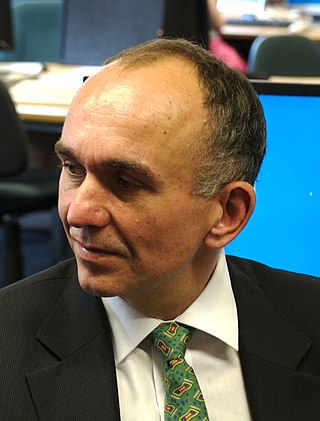
Peter Douglas Molyneux is an English video game designer and programmer. He created the god games Populous, Dungeon Keeper, and Black & White, as well as Theme Park, the Fable series, Curiosity: What's Inside the Cube?, and Godus. He currently works at 22cans.
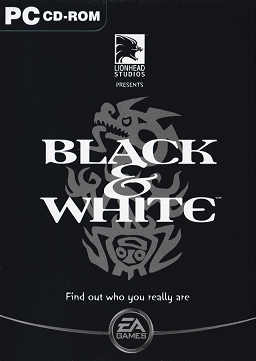
Black & White is a god video game developed by Lionhead Studios and published by Electronic Arts for Microsoft Windows in 2001 and by Feral Interactive in 2002 for Mac OS. Black & White combines elements of artificial life and strategy. The player acts as a god whose goal is to defeat Nemesis, another god who wants to take over the world. A primary theme is the concept of good and evil, with the atmosphere being affected by the player's moral choices. The core gameplay mechanic of Black & White is the interaction between the player and an avatar creature, who carries out the player's instructions and whose personality and behaviour change in reaction to how they are treated. Multiplayer is supported over a local network or online.
Syndicate is a series of science fiction video games created by Bullfrog Productions and published by Electronic Arts. There are two main titles: Syndicate (1993) and Syndicate Wars (1996), both of which are isometric real-time tactics games. An additional first-person shooter Syndicate title was released in 2012, and a spiritual successor to the series, entitled Satellite Reign, was released in 2015.

Bullfrog Productions Limited was a British video game developer based in Guildford, England. Founded in 1987 by Peter Molyneux and Les Edgar, the company gained recognition in 1989 for their third release, Populous, and is also well known for titles such as Theme Park, Magic Carpet, Syndicate and Dungeon Keeper. Bullfrog's name was derived from an ornament in the offices of Edgar's and Molyneux's other enterprise, Taurus Impact Systems, Bullfrog's precursor where Molyneux and Edgar were developing business software. Bullfrog Productions was founded as a separate entity after Commodore mistook Taurus for a similarly named company.
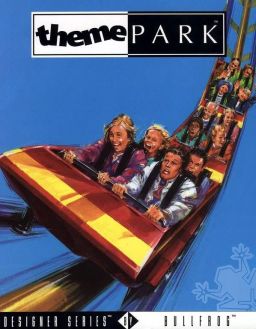
Theme Park is a construction and management simulation video game developed by Bullfrog Productions and published by Electronic Arts in 1994. The player designs and operates an amusement park, with the goal of making money and creating theme parks worldwide. The game is the first instalment in Bullfrog's Theme series and their Designer Series.

Discworld is a point-and-click adventure game developed by Teeny Weeny Games and Perfect 10 Productions and published by Psygnosis. It is based on Terry Pratchett's novels of the same name. Players assume the role of Rincewind the "wizzard", voiced by Eric Idle, as he becomes involved in exploring the Discworld for the means to prevent a dragon terrorising the city of Ankh-Morpork. The game's story borrows elements from several Discworld novels, with its central plot loosely based on the events in Guards! Guards!
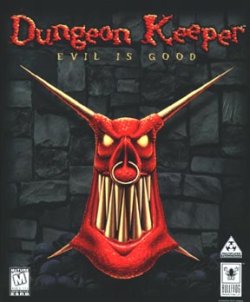
Dungeon Keeper is a strategy video game developed by Bullfrog Productions and released by Electronic Arts in June 1997 for MS-DOS and Windows 95. In Dungeon Keeper, the player builds and manages a dungeon, protecting it from invading 'hero' characters intent on stealing accumulated treasures, killing monsters and ultimately the player's demise. The ultimate goal is to conquer the world by destroying the heroic forces and rival dungeon keepers in each realm. A character known as the Avatar appears as the final hero. Dungeon Keeper uses Creative Technology's SoundFont technology to enhance its atmosphere. Multiplayer with up to four players is supported using a modem, or over a local network.

Dungeon Keeper 2 is a strategy game developed by Bullfrog Productions and published by Electronic Arts in 1999 for Microsoft Windows. The sequel to Dungeon Keeper, the player takes the role of a 'dungeon keeper', building and defending an underground dungeon from the would-be heroes that invade it, as well as from other keepers. In the campaign mode, the player is charged with recovering the portal gems from each area in order to open a portal to the surface. The player can also construct a dungeon without strict objectives, and multiplayer is supported over a network.

Theme Hospital is a business simulation game developed by Bullfrog Productions and published by Electronic Arts in 1997 for MS-DOS and Microsoft Windows compatible PCs in which players design and operate a privately owned hospital with the goal of curing patients of fictitious comical ailments. The game is the thematic successor to Theme Park, also produced by Bullfrog, and the second instalment in their Theme series, and part of their Designer Series. The game is noted for its humour, and contains numerous references to pop culture.

Syndicate Wars is an isometric real-time tactical and strategic game, developed by Bullfrog Productions and published by Electronic Arts. It was released for DOS in 1996 and for the PlayStation in 1997. It is the second video game title in the Syndicate series, retaining the core gameplay and perspective of the original Syndicate, but with a setting 95 years further into the future.

Populous II: Trials of the Olympian Gods is a 1991 strategy video game in the Populous series for the Amiga, Atari ST and MS-DOS-based computers, developed by Bullfrog Productions. Populous II is a direct sequel to Bullfrog's earlier game Populous and is one of the company's most notable games.

Theme Park World, also known as Theme Park 2, and in North America as Sim Theme Park, is a 1999 construction and management simulation game developed by Bullfrog Productions and released by Electronic Arts. The direct sequel to Theme Park, the player constructs and manages an amusement park with the aim of making profit and keeping visitors happy. Initially developed for Windows, it was ported to PlayStation and PlayStation 2, as well for Macintosh computers. The Mac version was published by Feral Interactive.
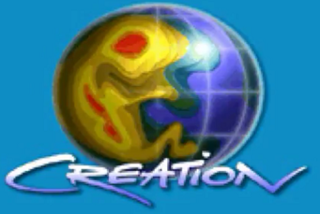
Creation was a cancelled real-time strategy video game developed by Bullfrog Productions as a spin-off of their Syndicate series of real-time tactics games. Set on an alien water world, a player-controlled submarine is tasked with looking after marine life and defending it from the Syndicate, who run planet Earth.
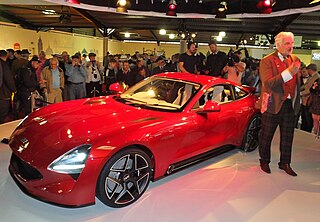
Les Edgar is an entrepreneur, known for being the co-founder and joint managing director of Bullfrog Productions, which he set up with Peter Molyneux. After Bullfrog's acquisition by Electronic Arts in 1995, Edgar became a vice president there. Edgar left Bullfrog in 1999, and eventually left the video gaming industry for the automotive industry, where he reintroduced Aston Martin to racing, and became chairman of TVR, which has, under his leadership, set up partnerships with Gordon Murray and Cosworth. Edgar has stated that he intends to return TVR to Le Mans 24 Hours.
Mark Webley is a British video game developer, known for working with developers such as Peter Molyneux and Gary Carr for Bullfrog Productions and later Lionhead Studios on projects including Theme Hospital and Black & White. In 2012, he took over as head of Lionhead after Molyneux left, and in 2016, he founded a studio called Two Point Studios with Carr, which has signed a publishing deal with Sega.
Glenn Corpes is an independent video game developer. He is best known for his work at Bullfrog Productions on titles including Populous, Magic Carpet, and Dungeon Keeper. He left Bullfrog in 1999 to form Lost Toys, which developed two games including Battle Engine Aquila. He has since focused on mobile game development and has created Ground Effect for iOS and Topia World Builder for iOS and Android. His latest projects are Fat Owl With A JetPack, and powARdup. His work has influenced games such as Minecraft.

Lost Toys Ltd. was a British video game developer founded in March 1999 by Glenn Corpes, Jeremy Longley, and Darran Thomas, all of whom had previously worked for Bullfrog Productions. Les Edgar helped by providing financial support. Lost Toys was the third Bullfrog break-off group, after Mucky Foot Productions and Lionhead Studios, and was founded due to disillusionment after Electronic Arts purchased Bullfrog.
References
- 1 2 3 4 5 6 7 8 9 10 11 12 13 14 15 "Indestructibles Part One". Blueprint. PC Zone . No. 35. London: Dennis Publishing. February 1996. pp. 30, 31. ISSN 0967-8220.
- 1 2 Sean Cooper (April 1996). "Indestructibles The Final Part... For Now". Blueprint. PC Zone . No. 37. London: Dennis Publishing. p. 34. ISSN 0967-8220.
- 1 2 3 "Indestructibles". Génération 4 (in French). No. 89. June 1996. p. 70. ISSN 1624-1088.
- 1 2 3 4 "Bullfrog". Edge. No. 22. Bath: Future plc. July 1995. pp. 25–27. ISSN 1350-1593.
- ↑ "The Indestructibles [PC – Cancelled]". Unseen64. 8 December 2008. Retrieved 10 December 2017.
- 1 2 "Indestructibles". Génération 4 (in French). No. 85. February 1996. pp. 46, 47. ISSN 1624-1088.
- 1 2 3 Alex Trowers (10 December 2012). "The ones that got away". Blogspot. Retrieved 10 December 2017.
- 1 2 3 4 Christian Donlan (13 March 2016). "The lost worlds of Lionhead and Bullfrog". Eurogamer . Retrieved 10 December 2017.
- ↑ Johnny Wilson (December 1995). "Bloody Good Games In Store From Bullfrog" (PDF). Read.Me. Computer Gaming World. No. 137. Ziff Davis. pp. 28, 29. ISSN 0744-6667 . Retrieved 10 December 2017.
- 1 2 3 4 5 Colin Williamson (August 1998). "The Indestructibles". PC Gamer US . p. 91. Archived from the original on 22 March 2016. Retrieved 10 July 2018.
- 1 2 "An Audience With Peter Molyneux". audience. Edge. No. 47. Bath: Future plc. July 1997. pp. 22–27. ISSN 1350-1593.
- ↑ Sean Cooper (March 1996). "Indestructibles Part Two". Blueprint. PC Zone . No. 36. London: Dennis Publishing. p. 35. ISSN 0967-8220.
- ↑ "Killer Bullfrogs Launch Game". News. Mean Machines Sega. No. 36. Peterborough: EMAP. October 1995. p. 12. ISSN 0967-9014 . Retrieved 21 April 2018.
- ↑ Colin Williamson (August 1998). "Creation". PC Gamer US . p. 89. Archived from the original on 22 March 2016. Retrieved 10 July 2018.
- 1 2 3 "In The Chair With Glenn Corpes". Retro Gamer . No. 160. Bournemouth: Imagine Publishing. October 2016. pp. 92–97. ISSN 1742-3155.